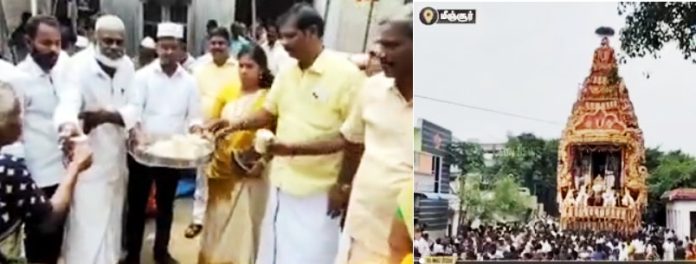
– M Rafi Ahmed
The essence of all religions is love, compassion and tolerance. Kindness is my true religion. No matter whether you are learned or not, whether you believe in the next life or not, whether you believe in God or Buddha or some other religion or not, in day-to-day life you must be a kind person. Those are the inspiring words of Nobel Peace Prize recipient Tenzin Gyatso, the 14th Dalai Lama, who is the Head of state and spiritual leader of the people of Tibet.
No doubt, Religious harmony in India is a concept that indicates that there is love, affection between different religions throughout the history of the Indian subcontinent. In the modern-day Republic of India, the Indian Constitution supports and encourages religious harmony. A shining example is Dharmasthala Temple wherein the priests of the temple are Madhwa Brahmins, who are Vaishnava, and the administration is run by a Jain Bunt family and the deities of the temple are Hindu God.
Really heartening to hear that the Muslim jamaat members at Minjur town took part at the 400-year-old Varadaraja Perumal Koil Vaikasi Brahmotsavam by offering “Koozh” (Pearl Millet Porridge) to the devotees who converged from different corners of Tiruvallur district to witness the temple car pulling event. The shrine is known as “Vada Kanchi” for devotees who make a beeline to the temple during temple festivals.
Some culvert records, relating to the history of the temple, are said to be currently in Mysore. This place was once called Mouncharanyam as sacred grass grew here all over the place. In course of time, Mouncharanyam became Minjur. Vaikasi Brahmotsavam is special here. During Garuda Sevai, lakhs of devotees visit this temple and offer worship to the presiding deity Varadaraja Perumal and Perundevi Thayar Amman.
Interestingly, there are shrines for Aandal, Garudan and Kothai Nachiyar inside the temple premises. Moreover, this is the only Vishnu temple in this region with a chariot. It is learnt that all Utsavams are celebrated here similar to Kanchi Varadaraja Perumal temple. It is said that devotees visit Kanchi early in the morning and follow it up by visiting the Minjur Varadaraja Perumal Temple.
In this context, it is learnt that Sufi Saints often shared messages of unity to the divine and promoted love of God, discouraging the discrimination of people solely based on religious denomination. For these historical and cultural reasons, Dargahs, such as the Ajmer Sharif Dargah, have been a place for Muslims, Hindus, and people of different faiths since medieval times.
In Coimbatore city, the century old Athar Jamaath Mosque on Oppanakara Street showed the way for communal harmony with the members and jamaath executives offering water bottles, cool drinks to devotees during the Koniamman temple car festival. Likewise, the Kottaimedu Muslim jamaath members led by Haji Inayathullah visited the Sangameswarar temple on important occasions taking part in their celebrations.
Flipping through the pages of history, it revealed that Punnathala is also an example of religious harmony in India, as the Harmony Village in Malappuram district in the neighbouring Kerala. This is a village known for religious harmony as Hindus and Muslims come together to follow tradition and celebrate festivals which are being followed even today maintaining communal harmony.
Witnessing communal harmony events across several parts of Tamil Nadu, the words of Missile Man of India Dr APJ Abdul Kalam – “Where there is righteousness in the heart, there is beauty in the character. When there is beauty in the character, there is harmony in the home. When there is harmony in the home, there is order in the nation” comes to one’s mind.
[The author is former Indian Express and Deccan Chronicle chief]




